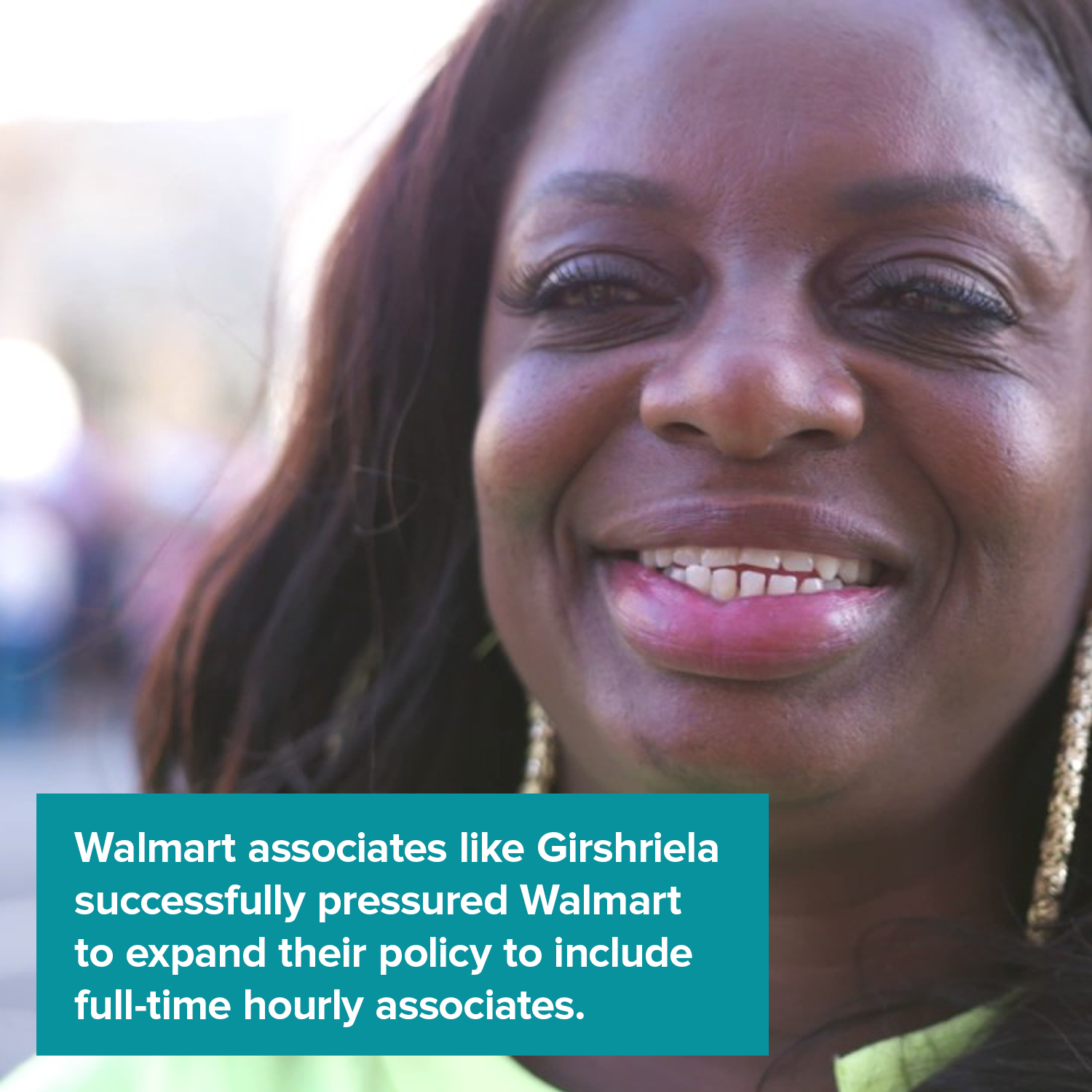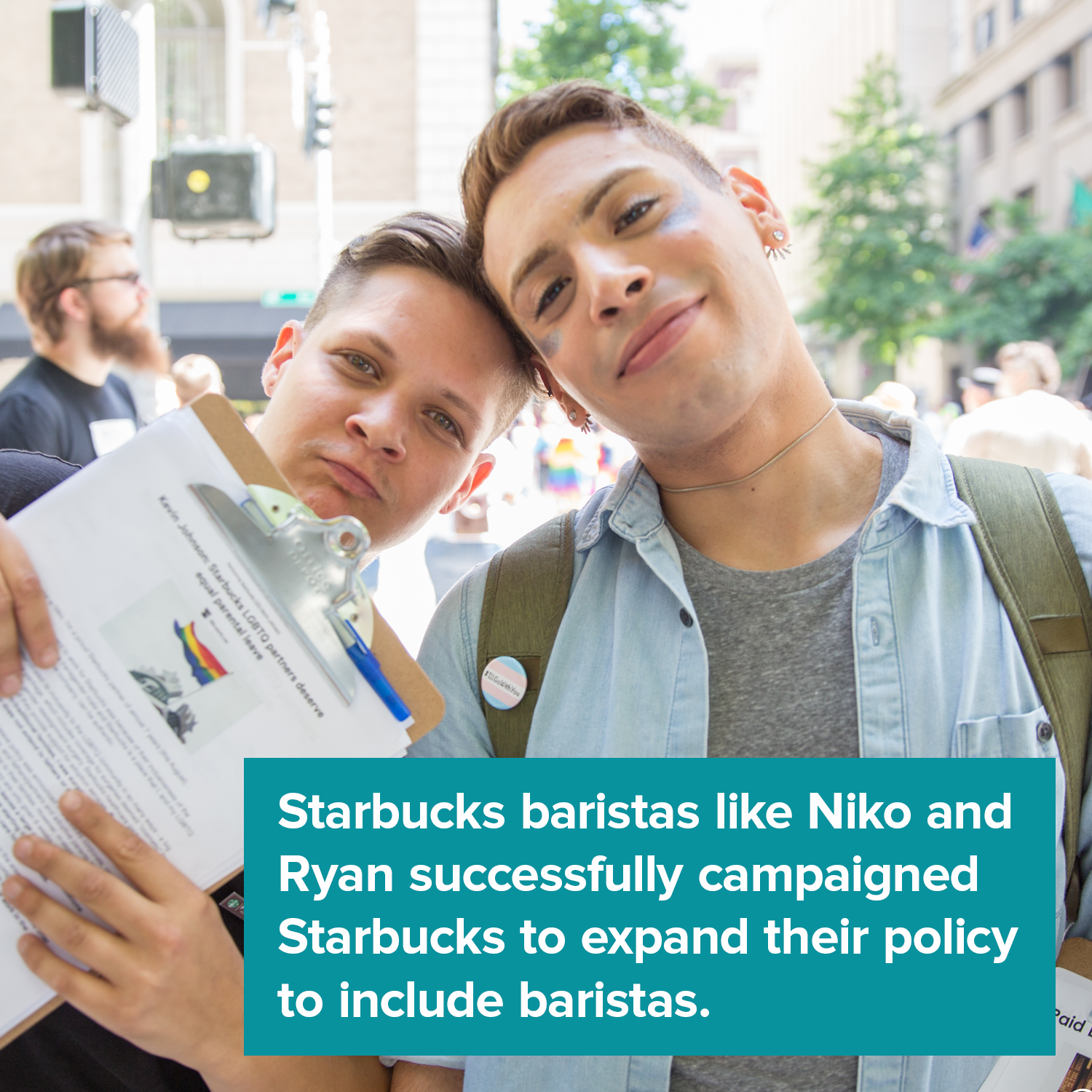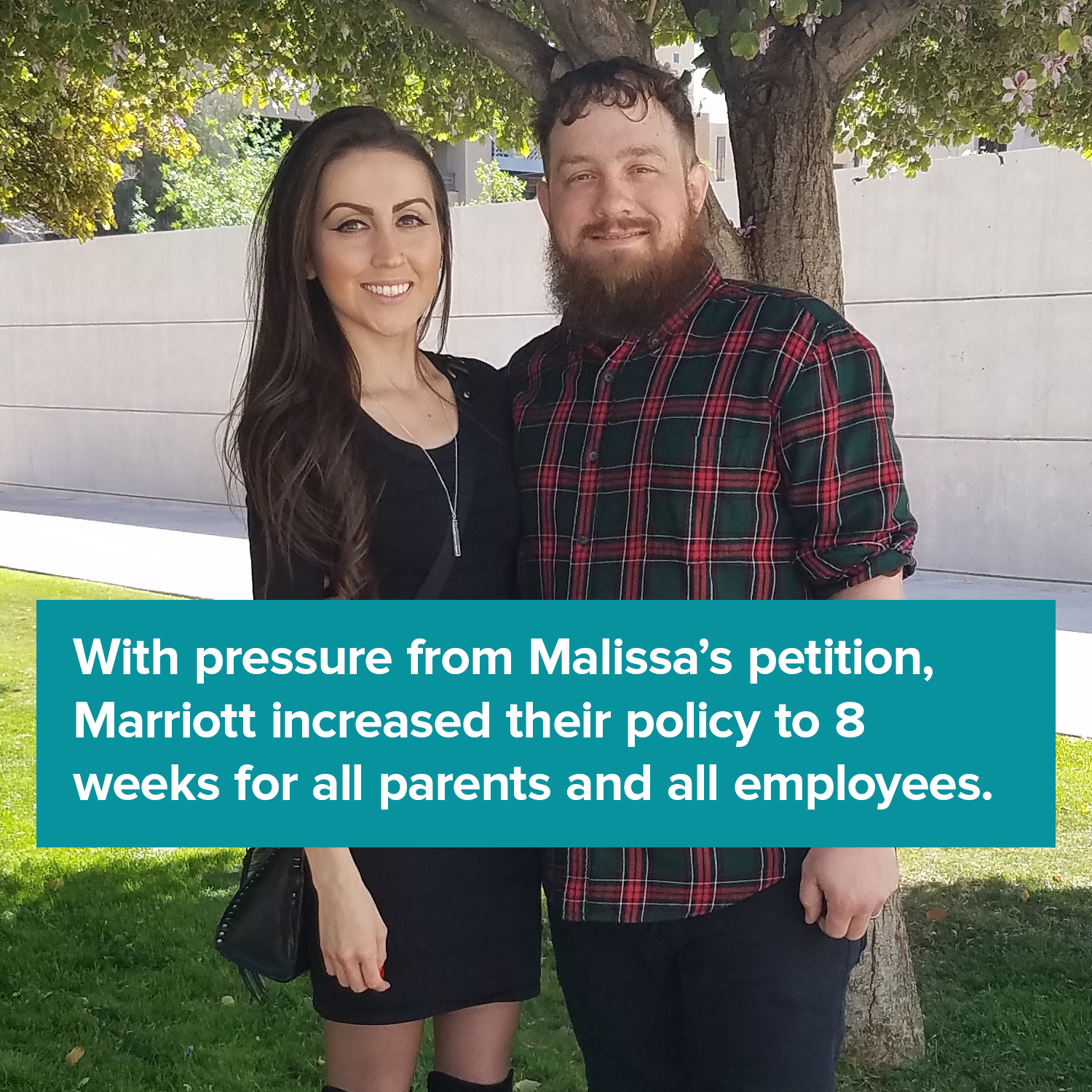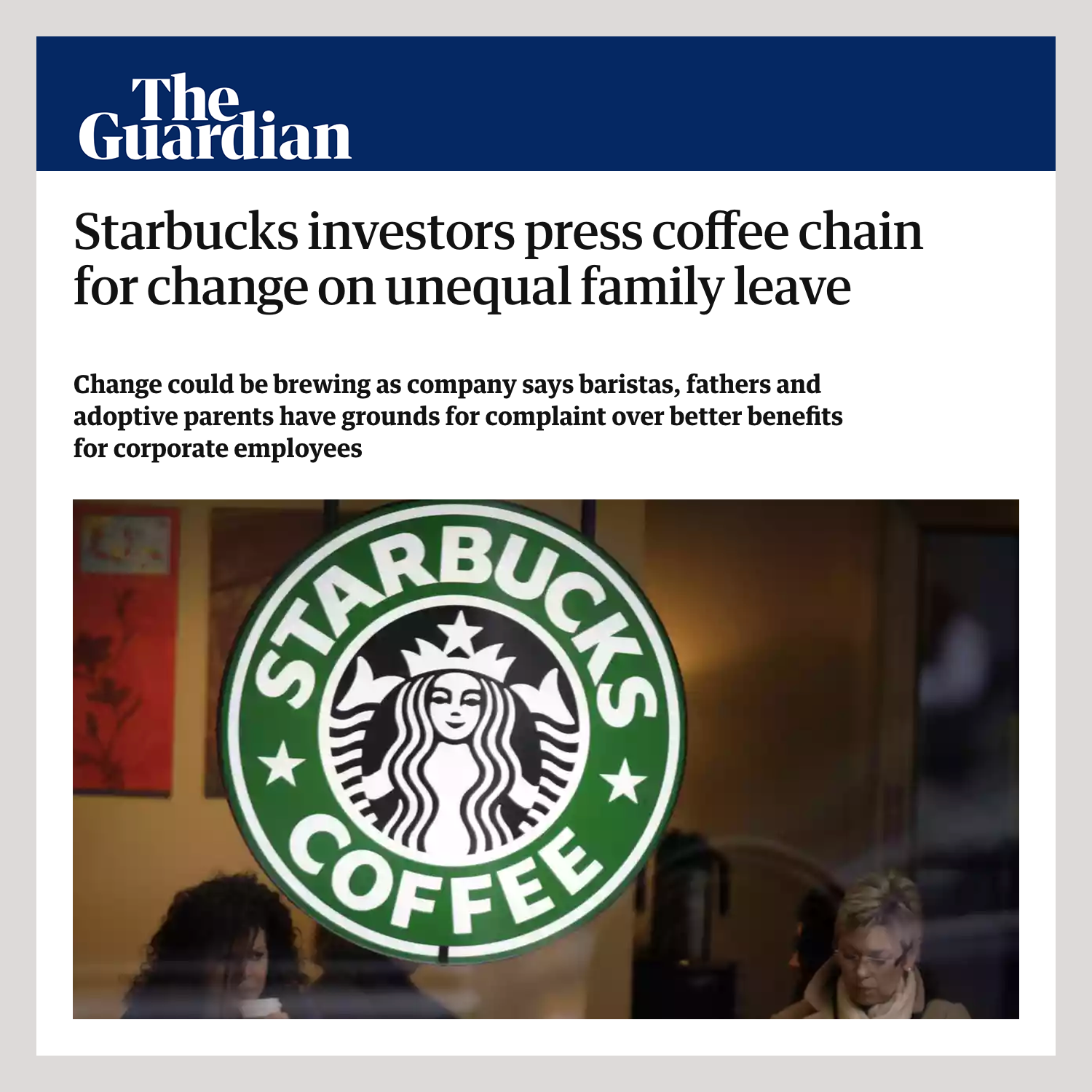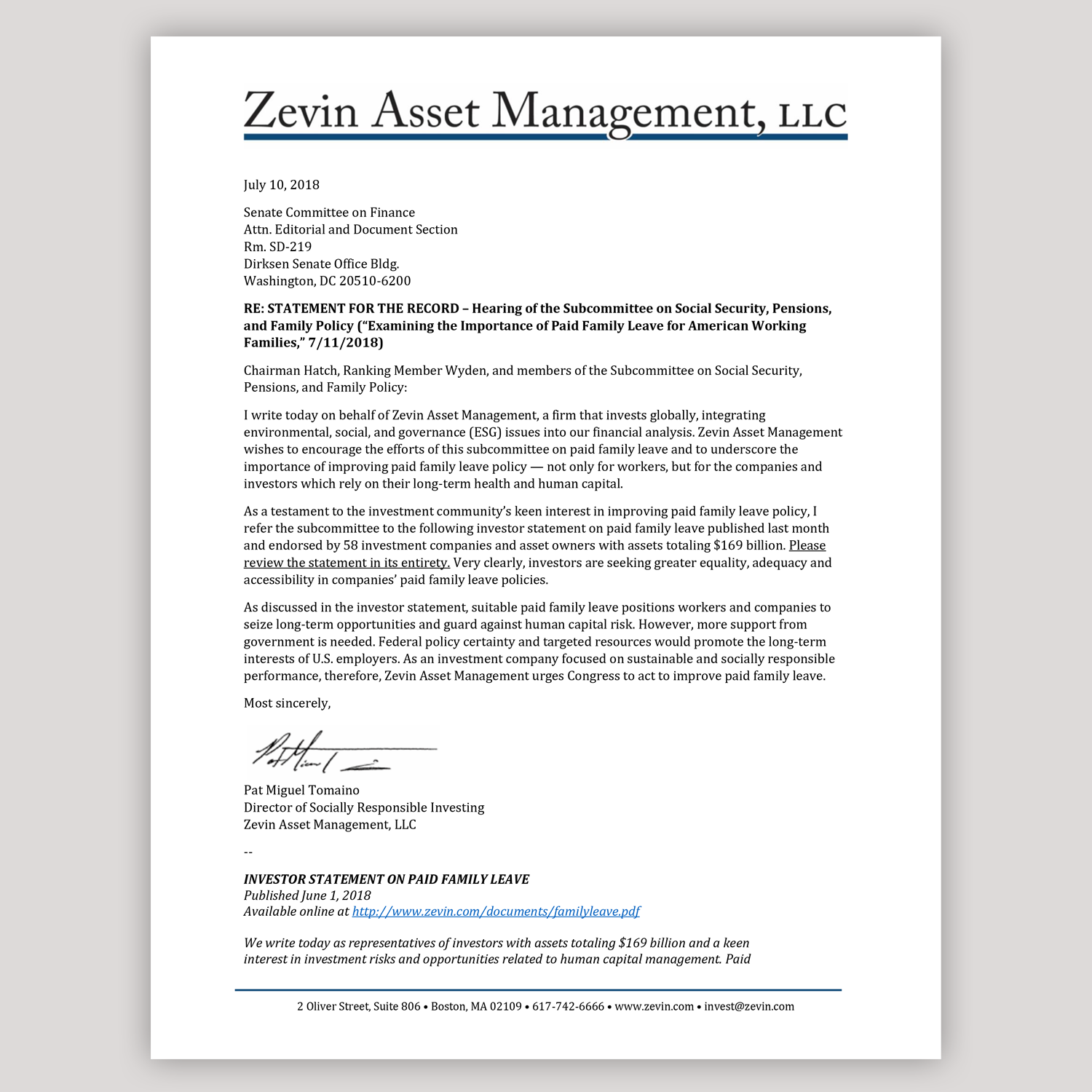Ranked Paid Family Leave Policies
at the Largest U.S. Employers
The private sector has reached a tipping point on paid family leave. In 2018 alone, 20 companies introduced new paid leave policies. A whopping 72% of surveyed companies provide paid leave equally to moms, dads, and adoptive parents and more than half are equal for all employees, whether salaried, hourly, or part-time.
The wave of expanded paid leave policies is a tectonic shift from just two short years ago, when we first analyzed the nation’s largest employers’ paid family leave policies and found paid leave largely left out LGBT parents and low-wage working people.
Check out what companies ranked best for working families, who’s driving this private sector momentum, and what it will mean for the 116th Congress that employers, big and small, increasingly support public policy.
The Best And Worst
Companies For Families
Major Trends
Top Employers Addressing the Caregiving Crisis
Last year, only two companies confirmed their caregiving policy. But increasingly titans like Cargill, Darden Restaurants, Deloitte, EY, General Electric, H&M, IBM, Nike, PricewaterhouseCoopers, and Wells Fargo are recognizing the caregiving crisis, in which one in six people are caring for a loved one who’s seriously ill or has a disability, and offering paid caregiving leave.
“We recognized that if our people were able to balance their caregiving needs with their professional lives, they would be more productive and we would reduce turnover, and support the culture we aspire to have. As a result...we introduced our expanded and holistic Paid Family Leave Program [that] recognizes that caregiving goes beyond that of welcoming a new child.”
Employees Organized and Won
In 2018, PL+US supported employees organizing for expanded paid family leave policies via public campaigns. Many of these announced new policies in 2018:
“When we started sitting down with H&M two years ago at our Labor Management Meetings and most recent contract negotiations, we discussed with them how very important and necessary it is that everyone at H&M has paid family leave, including part-timers, so that they have security in their jobs and so they can be a better and more loyal employee. This year H&M has agreed to include part-timers in their paid family leave policy, which is a big win for us."
Artavia Milliam, H&M employee and UFCW local 1102 member
Investors Became Activists
Investors called on companies in their portfolio, through shareholder resolutions and an open letter signed by over 50 firms, to address unequal or inadequate paid family leave policies. Many of those companies announced new policies this year, including AT&T, Gap Inc, Marriott, TJX, Starbucks, and CVS.
But investors didn’t stop there. At the historic Senate hearing on paid family leave, investors representing $169 billion in assets called on corporate leaders and Congress to support public policy.
“The investor voice is powerful and we have leveraged it at some of the largest employers like Starbucks and AT&T to win expanded paid family leave policies. Increasingly these employers recognize that families benefit from equal and generous paid family leave - and their bottom lines do too. Now it is time for corporate leaders to take bold action to address the long-term needs of their workforce by supporting public policy.”
Pat Tomaino, director of socially responsible investing at Zevin Asset Management
Business Leaders Support,
Preparing for Public Policy
For the first time, PL+US asked companies whether they support public policy. Deloitte, IBM, Microsoft, Levi Strauss & Co, General Electric, Xerox, and Starbucks replied that they do. These companies see that while Capitol Hill may be divided, paid family leave is a rare policy with overwhelming bipartisan support and an unprecedented number of paid family leave champions are headed to Washington.
Corporate leaders recognize that national legislation is inevitable and are ready to deeply engage with paid leave as a legislative priority. Now with the support of small businesses and top U.S. employers alike, we’re on the path to winning public policy.
“We always look for ways to invest in our people so we can make Microsoft an exceptional place to work. We ask our employees to bring their “A” game to work every day to achieve our mission, and we believe it’s our responsibility to create an environment where they can do their best work. We also support the people who are a part of our broader community and are happy to use our buying power to support companies whose values align with ours. We appreciate the recognition by PL+US and are proud to support and offer market-leading benefits and programs for our employees and to work with companies who value what we value.”
Fred Thiele General Manager of Global Benefits and Mobility at Microsoft
PL+US 2018 Employer Scorecard
Ranked Paid Family Leave Policies at the Largest U.S. Employers
This year, PL+US ranked top U.S. employers’ paid family leave policies to determine which companies offered the best policies for working families. More on our methodology here.
Join Us to Win
Paid Family Leave
When we first surveyed top employers in 2016, more than half of them refused to disclose information on their policies. Of those who did disclose, the majority had discriminatory policies that left out fathers, adoptive parents, and low-wage working people.
With your help, we’ve changed that. In two years, with consumer, investor, and employee pressure, we’ve changed the policies at 30 of the nation’s biggest employers.
But some companies, like Publix, still offer nothing: zero days following childbirth, zero days to care for a dying parent, zero days for chemo treatments. And since most people can’t afford to skip a paycheck, it’s time we make our voices heard.
Join us in demanding Publix change their policy: sign the petition here.
Frequently Asked Questions
+ What is the 2018 Employer Scorecard?
- Since its founding, PL+US has surveyed top U.S. employers to determine the state of paid family leave in the private sector, who has access to paid family leave and who doesn’t, and what that says about the need for change in both corporate and public policy.
- The 2018 scorecard tracks 70 companies’ parental, medical, and caregiving policies, whether they’re provided for all parents and all employees, and for the first time ever also tracks whether the employer supports public policy solutions for paid family leave.
+ What is the ranking methodology?
Policy information included in this dataset was confirmed either 1) directly with a company representative via email, 2) because it was previously published in a newspaper of record, 3) by company announcement published on a company website, or 4) via a current employee benefits manual. To learn more, check out our policy explanations document.
Blanks indicate no confirmation of policy data. Zeros mean the company has confirmed they offer unpaid leave or no leave.
Types of Employees: We have indicated whether company policies are available to part-time employees. Part-time typically meaning those who work less than 32, 30, or 20 hours/week on average, depending on how each company defines that class of employee.
How we determine whether a policy is provided equally to all parents: When assessing whether companies provide “equal paid parental leave” to birthing and non-birthing parents, we did not include a disparity of 6-8 weeks for childbirth recovery time. For example, a company that provides 6 weeks of parental leave in addition to 6-8 weeks for childbirth recovery via short-term disability is considered “equal” in this report. Note that companies that provide zero paid parental leave are not considered “equal.”
Scoring breakdown:
Childbirth Recovery (10 points possible)
- 10 points if ≥ 6-8 weeks @ full pay provided to those employees who give birth
- 5 points if ≥ 6-8 weeks @ less than full pay provided to those employees who give birth
- 0 points if < 6 weeks provided to those employees who give birth, regardless of % pay, or unknown
- if policy differentiates between primary/secondary caregiver, the weeks allowed for “primary” is used to determine points for this category
Parental leave - for the purpose of bonding with the newly arrived child (10 points possible)
- 10 points for providing ≥ 12 weeks parental leave to new parents. Note: childbirth recovery time may run concurrent in the case of parental leave that is equal for all parents
- 5 points for providing 6-11 weeks parental leave to new parents. Note: childbirth recovery time may run concurrent in the case of parental leave that is equal for all parents
- Parental Leave: 0 points if < 6 weeks parental leave available to new parents or if unknown. If policy differentiates between primary/secondary caregiver, the weeks allowed for “secondary” is used to determine points for this category
Family Caregiving (10 points possible)
- 10 points for providing ≥ 12 weeks family caregiving leave
- 5 points for providing 1-11 weeks family caregiving leave
- 0 points if < 1 week family caregiving leave, or unknown
Personal Medical leave - excluding sick days and time provided only for childbirth recovery (10 points possible)
- 10 points if ≥ 24 weeks @ full pay provided for personal medical leave
- 7 points if ≥ 24 weeks @ partial pay provided for personal medical leave
- 5 points if 6-23 weeks @ either full or partial pay provided for personal medical leave
- 2 points if 1-5 weeks @ either full or partial pay provided for personal medical leave
- 0 points if < 1 week provided, or unknown
Equality of Policies (40 points possible)
- 40 points if policy is equal across all parents AND class of employees (excluding policies that equally provide 0 weeks for any leave)
- 20 points if policy is equal across all parents OR class of employees (excluding policies that equally provide 0 weeks for any leave)
+ Definitions of terms in the scorecard
- Childbirth recovery—this is the period of time a birthing parent needs to personally recover from childbirth. In the U.S., it is often covered by short-term disability insurance for a period of 6 or 8 weeks for vaginal or C-section births, respectively. Some insurance providers allow additional time for those experiencing complications from childbirth or during pregnancy.
- Paid parental leave—sometimes called bonding leave, is paid time away from the workplace to welcome a newly-arrived child.
- Primary/secondary caregiver policy—some employers use an antiquated definition of “primary” versus “secondary” caregiver, which can require an employee to “prove” that they are a sole or primary caregiver in order to access full benefits.
- Family caregiving leave—paid time away from the workplace for an employee to care for a seriously ill family member.
- Personal medical leave—paid time away from the workplace for an employee’s own medical recovery. Personal medical leave is often also provided via short-term disability insurance.
- Birthing parent—the person who physically gives birth to a child. As family planning technology advances, our terminology must also expand to include people who give birth who are not the biological parent of that child (surrogacy) and people who identify as men who have the biological capacity to birth a child.
- Non-birthing parent—refers to a “non-gestational” parent such as a non-birthing mother, father, adoptive or foster parent.
+ Why did you choose those employers?
These are 70 of the largest employers in the United States.
+ What makes a company among the “best for families” or “worst for families”?
The best U.S. employers for families have some of the highest scores in PL+US 2018 Employer Scorecard. They provide equal paid family leave for all parents (adopted, foster, non-birthing parents, etc.) and all classes of working people (salaried, hourly, part-time, etc.).
The worst U.S. employers for families have the lowest scores in PL+US 2018 Employer Scorecard and have either no policy, an unequal policy for different types of parents and employees, and/or provide meager paid leave time.
+ What companies changed their paid family leave policies in 2018?
In 2018, AT&T, Cargill, CVS Health, Dollar General, EY, Ford Motor Company, Gap Inc, Home Depot, IBM, Kroger, L Brands, PriceWaterhouseCoopers, Starbucks, TJX, Walgreens, Walmart, H&M, Darden Restaurants, Marriott, and McDonald's all introduced new policies, which means more than 4.8 million people have access to new or expanded paid leave this year.
+ Who declined to disclose their paid family leave policies?
Trader Joe’s, UPS, Wegmans, Honeywell International, Wegmans, Rite Aid, Sears Holding, and Costco declined to disclose their paid family leave policies.
+ What’s changed since you started tracking top US employers in 2016?
When we first started researching companies’ paid leave programs in 2016, most policies were only available to salaried workers and only applied to birthing mothers. In two years, there’s been a tectonic shift. In 2018, of the companies that disclosed their policies to us, a whopping 72% provide paid leave equally to all parents and more than half are equal for all classes of employees. Today, only a few laggard companies like Publix, Albertsons, Supervalu, and FedEx provide nothing for dads and adoptive parents.
To learn more, check out our analyses from years past:
- 2016 End of Year Report
- 2017 Report that dove deeper into low-wage working people being left out of paid leave policies
- 2017 Analysis of LGBTQ and adoptive parents being left out of paid family leave policies
- 2017 Caregiving Report confirming only 2 companies with paid caregiving leave
- 2018 Mid-Year Update on Top US Employers policies





